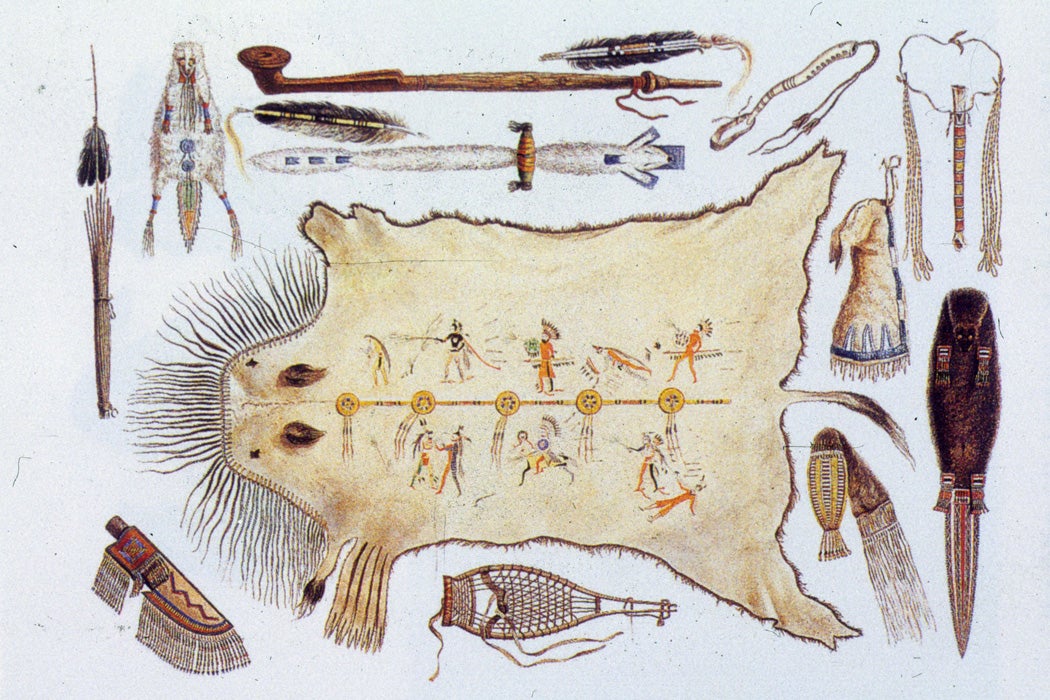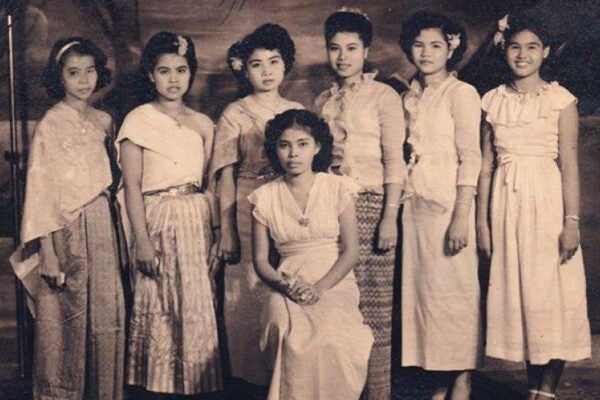This week, more and more regions in the US celebrate Indigenous Peoples’ Day, but many more know the federal holiday as Columbus Day. More than 500 years ago, a guy known as Christopher Columbus got famous for something he never did, having never even set foot on the North American continent, much less having “discovered” it. But Columbus should perhaps be more notorious for something he did do.
It’s remarkable the lopsided stories we tell in order to conveniently ignore or deny an uncomfortable reality. As we continue to celebrate the sepia-toned world of a false past, full of men and monsters and their colonial cruelties, as entire cultures, their languages, their knowledge, and their science were destroyed along the way.
Weekly Newsletter
After getting lost somewhere in the Bahamas, the friendly Arawak people Columbus met helped him, bringing food, water, and gifts. He even wrote of how kind they were. Columbus repaid their generosity by mocking their “ignorance” of things they had never seen before, forcing them to be his slaves, and demanding that they lead him to the source of the gold that their earrings had been crafted from. Columbus and his men proceeded to commit brutal acts, to destroy this peaceful population, thinking “nothing of knifing Indians by tens and twenties and of cutting slices off them to test the sharpness of their blades.” One of his associates, Bartolomé de las Casas wrote: “Such inhumanities and barbarisms were committed in my sight as no age can parallel. My eyes have seen these acts so foreign to human nature that now I tremble as I write.” Bartolomé de las Casas promptly quit the world to become a priest.
Some historians argue that you can’t blame Christopher Columbus for being a product of his time, which is a nice, convenient story. Nevertheless, contemporary accounts of Columbus’s senseless cruelty, and his subsequent arrest for his behavior, suggests that even taking racist historical attitudes into account, this was unspeakably barbaric. Once you know the full stomach-churning story, it’s hard to imagine how such a person, who treated whole populations as less than human, could be celebrated.
One of the most persistent and damaging legacies colonizers left behind was perpetuating the myth that they were men of action and science and business, modernizing all worlds they encountered. Indigenous nations all over the world, whole peoples and unique cultures, were framed as ignorant, culturally and socially backward, even primitive, with nothing to offer a new and exciting modern society. Columbus and the many colonizers after him are still commemorated hundreds of years later for “discoveries” of entire nations that already existed, with their own cultures and political systems and ways of understanding the world.
Columbus is remembered for his supposed contributions to science (such as “proving” that the earth was a sphere, despite most people knowing that long before him), to business (kicking off a global capitalism in the slave trade, for instance), to human progress in the exchange (read imposition) of Western ideas and values on supposedly backward cultures. But these first people, far from being scientifically impoverished, had already developed a rich and robust science and knowledge of their own, with their own language and understanding of how their world worked. It’s become ever more important for us tell, and listen, to those other stories, to balance the one-sided tales of destructive conquest with a focus on the indigenous peoples, who have far more to offer the world than many would think.
Is there really only one way to build a modern society, one based on Western ideology, with progress through constant growth and consumption? Is there only one kind of science we can use to truly understand the world? There’s hardly an indigenous culture surviving that does not struggle to preserve their traditional language and knowledge against the overwhelming homogenizing influences of Western colonialism.
There is still large scale dismissal and disrespect of indigenous language and traditional knowledge, based on the widespread belief that it contributes “nothing to the development of knowledge, humanities, arts, science, and technology.” Scientists and scholars, the very people who strive to objectively preserve the world’s knowledge, may regularly reject or misinterpret information. When knowledge does not take the scientific forms we’ve come to expect from academic research, it’s rejected, but that’s due to an unthinking bias about what value traditional knowledge has to offer. If it isn’t in the form of a scientific report or paper, but is delivered in the form of a story, it’s regarded as unscientific and anecdotal folklore, no matter what new information is being conveyed.
We are slowly learning how crucial traditional knowledge and language diversity is in areas such as biological diversity, especially with the rapid decline of rare plant and animal life in unique ecosystems around the world. Their unique properties have long been recorded by indigenous groups through their language—if anyone had ever cared to look and listen. In many places, scientists are finding, to their surprise, that traditional knowledge is on a par with many scientific discoveries. As many endangered languages die out, so do the unique discoveries their speakers have preserved across generations in their oral histories.
But what does it mean when we accept traditional knowledge as a kind of science only after it’s been compared with contemporary scientific knowledge and processes, and shown to be similar? Why is it that we don’t just respect and trust the work of indigenous scholars, researchers, and scientists, who may present their work in a different form to scientific conventions? As more researchers understand the value of different ways doing science, there have been calls for there to be an integration of long disregarded indigenous knowledge into the academy’s scientific process. Traditional knowledge often values a more nuanced, contextual, and holistic view of information from observation and thought, not just piecemeal experimentation of discrete, individual components of a system.
The Tewa scholar Gregory Cajete says of “Native science” that:
…it is a metaphor for a wide range of tribal processes of perceiving, thinking, acting, and ‘coming to know’ that have evolved through human experience with the natural world. Native science is born of a lived and storied participation with the natural landscape. […It] is the collective heritage of human experience with the natural world.
It’s not hard to see how these different approaches could complement each other, one collective and holistic, one individual and detailed, if both sides were able to engage with each other. We know that stories and oral histories are memorable and effective tools for teaching and learning science, but they are often rejected as not serious or scientifically rigorous enough. There’s more than one way to record knowledge and more than one way to engage in scientific explorations and observation, just as there is more than one way to frame our reality and experiences through language.
It’s easy to forget that the reality of our lives, through our very language, has been mapped out in conceptual metaphors—micro stories where we think and talk about things in terms of something else we all can relate to. We march on with life in a straight line, with our futures ahead of us and our pasts behind, our feelings colorful, green with envy, seeing red, feeling blue, as we build up our scientific theories about the world till they’re safe as houses, their foundations unshakeable. These are our realities, yet they are not real.
The way we talk and use language to explain phenomena does not interfere with our ability to do objective, informative research, yet this is often something unthinkingly assumed about other cultures. It’s easy to misinterpret the metaphorical language of an indigenous culture as though it was a literal belief, especially if a researcher was predisposed to thinking of those people as very different, or unscientific, or even primitive.
How would a strange alien researcher judge us? As the anthropologist Roger Keesing points out in the Journal of Anthropological Research (link above), we may consider ourselves modern, but we often talk like people before the people before Columbus, who knew the earth was round. In our metaphorical language, we think of the world around us as flat. The sun rises and sets at either end of the earth in this reality, and we all accept this as normal, even though we know that little story we tell ourselves to understand the world is astronomically untrue. “But it would be nonsense for an ethnographer of England or the US to write that ‘the natives believe that the earth is flat and that the sun goes up and comes down,’ or that ‘the natives believe that the heart is the seat of the emotions.’”
Yet that is the kind of generalized misinformation that gets set down in the records about many indigenous cultures. Yes, it is —so long as that alien ethnographer starts from a position of respect for the people they were studying, and assumed they understood the realities of the world as well as anyone can, and that it’s just a little matter of language that makes it seem like they believe the impossible. When people are very different from ourselves, it’s easy to believe they’ll believe anything. We may often misinterpret the things we hear, choosing readings that make that culture seem more exotic and different. Keesing wonders if scientific explanations that try to account for some ambiguous indigenous concepts that are hard to understand can actually end up inventing whole belief systems for indigenous peoples that just aren’t real. Not all fantastical sounding language is magic; sometimes it’s just ordinary.
For example, the mysterious Oceanic Austronesian concept of “tapu/tabu,” which was brought to the English language as “taboo” by the controversial Captain James Cook, has been recorded with a sense of the “sacred,” “forbidden,” but also “unclean” or “cursed.” It’s a somber, foreboding, and certainly exciting reading of what appears to be a serious religious belief of the people of the Pacific. But “tapu” is contradictory, sometimes a positive in terms of its air of sanctity and a negative in terms of its cursed uncleanliness. How can it make sense to be both?
Keesing points out that it can be read, more boringly, as something like “off limits,” because things are usually “tapu” in certain contexts to certain people, in a nuanced way. Things are not “tapu” in the absolute, infused with a strange mystical energy by gods and ancestors as they are revered by credible worshipers. Relatively speaking, someone can sensibly define what’s off limits, “tapu,” and that could be a god making a religious pronouncement or it could be parents telling their kid not to do something. Or it could be as blandly ordinary as the related word “kapu,” which some modern Hawaiians put on their non-magical fences to mean “no trespassing.”
There are many ways of seeing the world, and indigenous cultures all around it have had a long time to amass a great knowledge about how things work. They have evolved languages to tell people about it in ways that they could understand. By mistaking a culture’s hard won history for a fantasy, or by disrespecting the wealth of knowledge in all its different forms, treating it as worthless because it doesn’t look like the conventions we expect, we’re merely keeping up a Columbian, colonial tradition of treating people not like ourselves as less than human. And that might cost us more than we expect.
Editor’s Note: This article was amended to correct an errant apostrophe in the first sentence.







